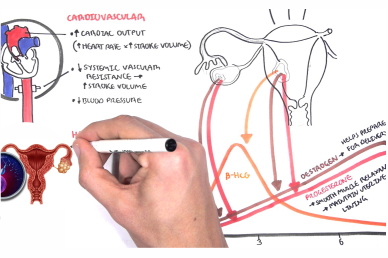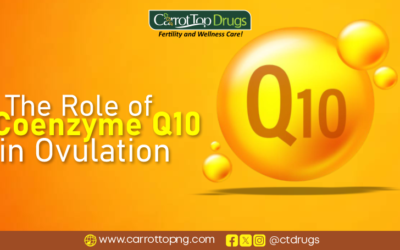Physiological changes during pregnancy are certain modifications a woman passes through in pregnancy to accommodate the growing fetus or embryo. These physiological changes are normal, and they include cardiovascular (heart and blood), hematologic (blood), metabolic, behavioural (brain), renal (kidney), posture and respiratory (breathing) changes. The placenta and the pregnant woman also produce hormones which have a wide range of effects during pregnancy. These physiological changes during pregnancy you could be passing include following:
1.CHANGES IN THE CARDIOVASCULAR SYSTEM:
- Peripheral Vasodilation: This can be referred to as the widening of blood vessels located in peripheries, especially the veins. It occurs due to the relaxation of muscles in the walls of the vessels. This causes drop in peripheral resistance and thus the blood pressure.
- As at the 8th week of pregnancy, cardiac output (is the total volume of blood pumped by the heart per minute) increases by 20% and then further up to 40% increase and maximal at the 20 -28th In labour, there is further increase in cardiac output followed by a huge increase immediately after delivery and then returns to normal within an hour.
- Contributing to the increased cardiac output are increased volume of blood pumped and an increase in heart rate of 10-20 beats per minute.
- Blood pressure is lower than normal in the first two trimesters but returns to normal in the third. This can be caused by the circulatory system, as blood vessels expand to let blood flow to the uterus as well as fluctuating hormonal levels.
- Venous return (the flow of blood back to the heart) in the inferior vena cava (a large vein that carries the deoxygenated blood from the lower and middle body into the right atrium of the heart) can be compromised in late pregnancy if a woman lies flat on her back due to pressure from the uterus, resulting in reduced blood pump and cardiac output. This can be relieved by lying in the left lateral position. Reduced cardiac output could compromise fetal blood supply.
- There is an increased risk of pulmonary oedema (a condition caused by excess fluid in the lungs) if there is an increase in blood volume, or increased pulmonary capillary permeability (capacity of a blood vessel wall to allow for the flow of small molecules (drugs, nutrients, water, ions) or even whole cell in and out of the vessel) secondary to pre-eclampsia (a pregnancy complication which causes high blood pressure and signs of damage to another organ system like the kidney and liver). The highest risk time is the second stage of labour or immediate postpartum period when cardiac output is high.
RESPIRATORY SYSTEM CHANGES
- These modifications are controlled primarily by progesterone and take place during the early stages of pregnancy.
- There is an increase in tidal volume (the lung volume representing the normal volume of air displaced between normal inhalation and exhalation when extra effort is not applied) (almost 50%), which could cause and increase in minute ventilation all through pregnancy (21% and 50% in the second and third trimesters respectively). The number of breaths per minute does not alter significantly.
- Increased oxygen consumption (by 20% approximately) and increased metabolic rate cause an increase in oxygen demand.
- The occurrence of the enlarged uterus during gestation causes an increase in pressure on the diaphragm during pregnancy. This in turn, causes an increase in resting oxygen requirements and an increase in the work required for breathing. This occurs because the diaphragm is a key muscle which ensures proper respiration and it helps to inflate the lungs.
- Extra pressure from the uterus makes it harder for the diaphragm to contract, using more energy to bring out the same amount of air. This means there would be a decreased amount of available oxygen for performance during aerobic exercise.
- It is important you understand these respiratory changes while starting an exercise programme/routine during pregnancy. Towards the end of the term, one might not be able to maintain the same amount od intensity or work level during the start of gestation.
HORMONAL CHANGES DURING PREGNANCY
- HUMAN CHORIONIC GONADOTROPIN HORMONE (hcG): This hormone is made only during pregnancy. HCG hormone levels found in the urine and mother’s blood rise a lot during the first trimester. It is produced by the layer of the embryo which eventually becomes the placenta. This hormone prepares the body by suppressing your immune system to support the baby. Women with high hcG levels, often experience nausea and vomiting.
Low levels of hcG have been found to be associated with pregnancy loss.
- PROGESTERONE HORMONE:
- This hormone is made by the ovaries and placenta during pregnancy. It stimulates the thickening of the lining of the uterus to ensure the implantation of the fertilized egg. Progesterone levels become very high during pregnancy. This could sometimes slow down the passage of food through the intestine leading to decreased bowel movement and constipation.
- Progesterone causes the lower oesophageal sphincter (it prevents acid and stomach contents from traveling backwards from the stomach when closed) and causes increased reflux which makes women prone to heartburn. The enlarging uterus which exerts pressure on the stomach further contributes to this later in pregnancy. It also makes the gums for friable, spongy and prone to bleeding. Proper dental care is very important.
- Increased levels of Progesterone also contribute to excess sleepiness and tiredness and food cravings.
- OESTROGEN HORMONE:
- It helps develop female sexual traits. Normally, it is formed in the ovaries. It is also helps in maintaining healthy pregnancy and it is made by the placenta.
- High oestrogen levels are associated with increased pigmentation of the skin. Most of these pigmentations are temporary and are likely to disappear during pregnancy.
- Fluctuating levels or oestrogen and progesterone play a major role in maintaining the mood of the mom-to-be. It can change from sadness, anxiety to depression.
METABOLIC CHANGES IN PREGNANCY
Metabolism changes during pregnancy substantially. Early gestation be seen as an anabolic phase (build up process) in the mother with an increase in maternal fat stores and small increase in insulin sensitivity. Therefore, nutrients are stored in early pregnancy to meet the maternal and foeto-placental demands of late gestation and lactation. However, late pregnancy can be viewed as a break down process with decreased insulin sensitivity. An insulin resistance results increase results in maternal glucose and free fatty acid concentrations which allows for availability of foetal growth.
CHANGES IN KIDNEY FUNCTION:
The urinary system is made up of the kidneys, the tubes which connect the kidneys to the bladder where urine is stored, and the urethra (the tube that passes urine out of the body). The organs of the urinary system work extra hard to filter the mother’s waste products from her blood, including that of the foetus and get rid of them in her urine and there is an increase in the amount of urine produced during pregnancy.
There is also a need to urinate more often especially in the first and last months of pregnancy, which is normal. This occurs due to the growing uterus which presses against the bladder. In late pregnancy, a woman has to get up in the night to urinate more often because of fluid retention in the legs
and feet during the day, which is absorbed into the blood circulation when her legs are raised in bed. The kidneys extract the excess fluid and turn it to urine and so the bladder fills at night more quickly.
HEMOLYTIC CHANGES DURING PREGNANCY:
- Plasma (A liquid called plasma makes up about half of the content of blood. Plasma contains proteins that help blood to clot, transport substances through the blood, and perform other functions. Blood plasma also contains glucose and other dissolved nutrients).
volume increases over the course of pregnancy by about 50%. Anaemia is caused by the rise in plasma volume. Elevated erythropoietin (It plays a key role in the production of red blood cells (RBCs), which carry oxygen from the lungs to the rest of the body) levels increase the total red cell mass by the end of the second trimester
- A normal pregnancy creates a demand for about 1000 mg of additional iron.
- Levels of some clotting factors increase. These changes protect from haemorrhage (bleeding) at delivery.
- Serum albumin (the most abundant protein in the human blood plasma which transports hormones, fatty acids and other compounds. It also maintains osmotic pressure) increases.
In conclusion, physiological changes during pregnancy are a normal during pregnancy. They come with certain side effects which are temporary. But for nine months, you can maintain a safe and healthy pregnancy with your daily dose of EVERGREEN NATAL CARE.

















